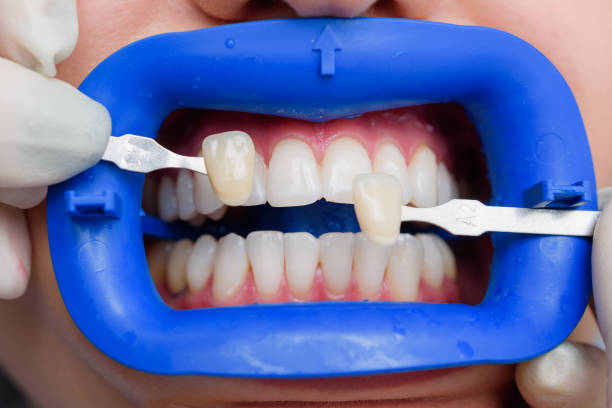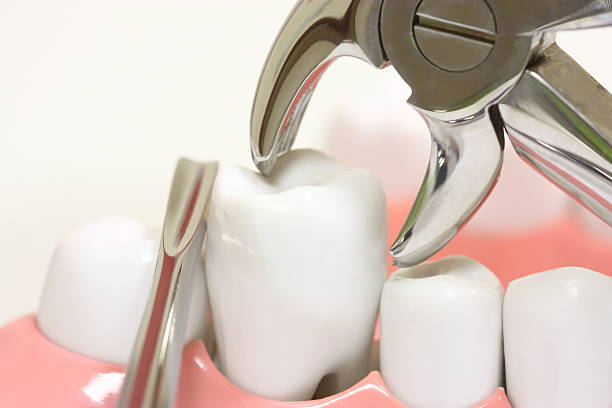Introduction to Crown Lengthening
What is Crown Lengthening?
Crown lengthening is a dental surgical procedure designed to expose more of a tooth’s surface by reshaping or removing gum tissue and, sometimes, bone. This method allows dentists to address functional or aesthetic concerns and create a healthier gum-to-tooth ratio.
Why is Crown Lengthening Done?
This procedure serves various purposes, such as preparing a tooth for a dental crown or bridge, treating decay or fractures beneath the gumline, or enhancing the smile by reducing a “gummy” appearance. It is a versatile solution that caters to both health and cosmetic needs.
Importance of Crown Lengthening in Dentistry
Crown lengthening not only improves dental function but also significantly impacts overall oral health. By reducing excess gum tissue, it facilitates better cleaning, lowers the risk of gum disease, and enhances the durability of restorations.

Types of Crown Lengthening Procedures
Functional Crown Lengthening
This type is performed to expose more tooth structure for restorative purposes, such as placing a crown or filling. It ensures a secure fit and longevity of the dental work.
Aesthetic Crown Lengthening
Aesthetic procedures are focused on improving the visual appeal of a smile. Dentists may use this method to correct uneven gumlines or reduce the appearance of excessive gum tissue for a balanced, attractive look.
Gingivectomy vs. Crown Lengthening: Key Differences
While both involve gum tissue removal, gingivectomy is a less invasive option primarily for gum reshaping, whereas crown lengthening may include bone adjustment to address functional needs.
Reasons for Crown Lengthening
Addressing Tooth Decay Below the Gumline
When decay occurs below the gumline, it can be challenging to treat without removing excess tissue. Crown lengthening provides access to the affected area, enabling effective treatment.
Preparing for Restorative Dental Procedures
Crown lengthening ensures adequate tooth exposure for procedures like crowns, bridges, or veneers, reducing the risk of failure or complications due to insufficient support.
Enhancing the Smile’s Appearance
For individuals concerned about a “gummy” smile, crown lengthening can create a more proportionate gum-to-tooth ratio, resulting in a confident and aesthetically pleasing smile.
The Crown Lengthening Process
Consultation and Assessment
The process begins with an evaluation by your dentist, who will assess your oral health, discuss your goals, and determine if crown lengthening is the right option for you.
Preparing for the Procedure
Before the procedure, your dentist may recommend a deep cleaning, adjust medications, or advise dietary changes to ensure optimal healing.
The Procedure Step-by-Step
- Local anesthesia is administered to numb the area.
- The dentist removes excess gum tissue and, if necessary, reshapes the underlying bone.
- Stitches may be placed to promote proper healing and tissue alignment.
- A follow-up appointment is scheduled to monitor progress.
Recovery and Aftercare
Post-Procedure Care Tips
To aid recovery, follow these tips:
- Avoid strenuous activities for a few days.
- Steer clear of crunchy or hard foods and stick to soft ones.
- Rinse gently with warm salt water as directed.
Healing Timeline and Expectations
Healing typically takes about 7–10 days for gum tissue, with complete recovery within 4–6 weeks. Patients can resume normal activities within a day or two but should follow their dentist’s guidelines closely.
Managing Pain and Discomfort
Mild discomfort can be managed with over-the-counter pain relievers and cold compresses. Report any unusual swelling or severe pain to your dentist promptly.

Benefits of Crown Lengthening
Improved Dental Function
Crown lengthening is instrumental in creating a proper foundation for dental restorations. By exposing more tooth structure, it ensures a secure fit for crowns, fillings, or bridges, preventing complications like dislodgment or decay around poorly fitted restorations.
Enhanced Aesthetics
For individuals struggling with an unbalanced or “gummy” smile, crown lengthening transforms their appearance. The procedure aligns the gumline for a natural, proportionate look, boosting confidence and self-esteem.
Long-Term Oral Health Benefits
Excess gum tissue can harbor bacteria, increasing the risk of gum disease. Crown lengthening reduces this risk by eliminating pockets where bacteria thrive, promoting better oral hygiene and overall gum health.
Risks and Complications
Common Risks to Consider
As with any surgical procedure, crown lengthening carries risks such as bleeding, infection, and swelling. While these are typically mild, patients should follow aftercare instructions to mitigate them.
How to Minimize Complications
Proper aftercare, including maintaining oral hygiene and attending follow-up appointments, is crucial. Dentists may prescribe antibiotics or recommend specific mouth rinses to reduce infection risks.
When to Consult Your Dentist
Contact your dentist if you notice excessive swelling, prolonged bleeding, or signs of infection such as pus or fever. A smooth recovery can be ensured and complications can be avoided with early management.
Cost of Crown Lengthening
Factors Influencing the Cost
The cost of crown lengthening depends on factors such as the complexity of the procedure, the number of teeth involved, and the dentist’s expertise. Geographic location also plays a role in pricing.
Average Price Range
On average, crown lengthening can cost between $500 and $3,000 per tooth. Aesthetic procedures may fall on the higher end of the spectrum due to their precision and cosmetic focus.
Insurance Coverage and Payment Plans
While insurance may cover functional crown lengthening for restorative purposes, aesthetic procedures are usually considered elective and not covered. Many dental offices offer payment plans to make the procedure more affordable.
Comparing Crown Lengthening to Alternative Treatments
Orthodontics and Other Smile Design Options
Orthodontic treatments like braces or aligners address misalignment but do not alter gum tissue. Crown lengthening is the go-to option when gum contouring is required for smile improvement.
Veneers vs. Crown Lengthening
Veneers can mask aesthetic issues like small teeth or uneven gumlines but cannot treat structural concerns. Crown lengthening offers a permanent solution by addressing the root cause of these problems.
When to Choose Crown Lengthening Over Alternatives
If your concern lies with excess gum tissue or preparing for a restoration, crown lengthening is likely the best option. Consulting your dentist will help determine the most appropriate treatment for your needs.

Who is a Candidate for Crown Lengthening?
Evaluating Gum and Tooth Health
Healthy gums and teeth are essential for crown lengthening. Severe gum disease or inadequate bone structure may disqualify a candidate until underlying issues are addressed.
Contraindications for the Procedure
Patients with certain health conditions, such as uncontrolled diabetes or blood clotting disorders, may not be suitable for crown lengthening. Smoking can also impede healing and should be avoided.
Consulting with a Specialist
A periodontal specialist can evaluate your case and recommend the best approach. They’ll consider your medical history, dental goals, and oral health to determine if crown lengthening is right for you.
Preparing for Your Crown Lengthening Appointment
Questions to Ask Your Dentist
Before undergoing the procedure, discuss the following with your dentist:
- What are the expected results of crown lengthening?
- How should I prepare for the procedure?
- What are the potential risks and benefits in my case?
Pre-Procedural Guidelines
Dentists may advise avoiding certain medications, maintaining excellent oral hygiene, and arranging transportation on the day of surgery if sedation is used.
What to Expect on the Day of Surgery
Arrive at your dentist’s office prepared for a comfortable experience. Local anesthesia is commonly used, and the procedure typically lasts one to two hours, depending on its complexity.
The Role of Technology in Crown Lengthening
Laser-Assisted Procedures
Laser technology has revolutionized crown lengthening by offering precision and minimizing discomfort. Lasers reduce bleeding and swelling, promoting faster recovery times.
Digital Imaging and Planning
Digital tools allow dentists to plan the procedure with remarkable accuracy. They can visualize the final results before surgery, ensuring a predictable and satisfying outcome.
Advancements in Gum Surgery Techniques
Modern techniques emphasize minimally invasive methods, reducing recovery times and enhancing patient comfort. These innovations make crown lengthening more accessible and appealing.
Crown Lengthening and Overall Dental Health
Preventive Measures Post-Procedure
Maintaining a consistent oral hygiene routine after crown lengthening is vital. Regular brushing, flossing, and dental checkups prevent complications and keep your gums healthy.
Maintaining Oral Hygiene After Surgery
To clean your teeth, use a toothbrush with soft bristles and gentle circular strokes. Avoid abrasive toothpaste or vigorous brushing near the surgical site.
Regular Follow-Ups with Your Dentist
Scheduled follow-ups ensure proper healing and allow your dentist to monitor your progress. They can address any concerns and make adjustments to your aftercare routine if needed.
Conclusion
Crown lengthening is a transformative procedure that addresses both functional and aesthetic dental concerns. Whether you’re preparing for restorative work or seeking a smile makeover, this versatile surgery offers numerous benefits. Consult your dentist to explore whether crown lengthening aligns with your dental goals and needs.
FAQs About Crown Lengthening Procedure
- Is crown lengthening painful?
Most patients experience minimal pain during the procedure due to local anesthesia. Post-procedure discomfort is manageable with prescribed pain relievers. - How long does the procedure take?
The procedure typically takes 1–2 hours, depending on the complexity and the number of teeth involved. - Can I eat normally after crown lengthening?
You’ll need to stick to soft foods for a few days post-procedure. Avoid spicy, crunchy, or hard foods to prevent irritation. - How soon can I get a dental crown after the procedure?
Dentists usually wait 4–6 weeks for full healing before placing a crown to ensure optimal results. - Is the procedure permanent?
Yes, crown lengthening provides lasting results. However, maintaining good oral hygiene is crucial to preserving its benefits.



